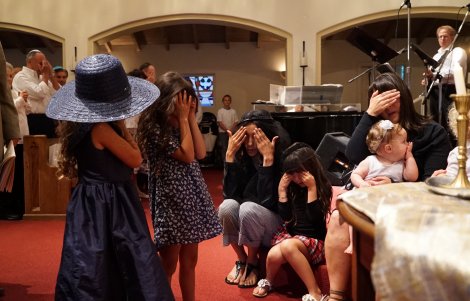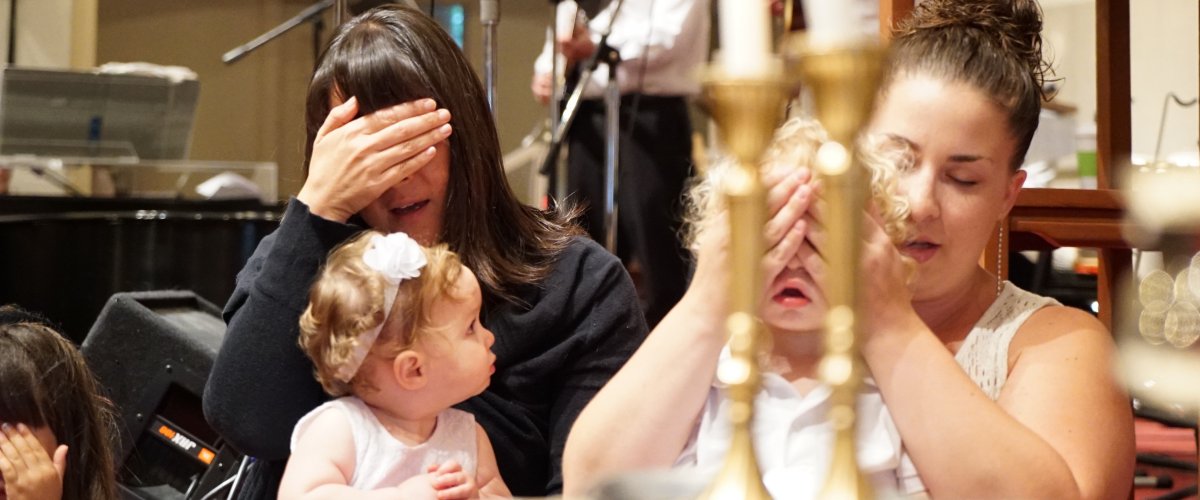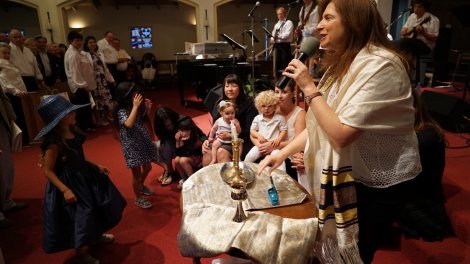Candles may be lit, at the earliest, 1-1/4 hours before sunset, but the [customary] time is up to 18 minutes before sunsetIf the [traditional 18-minute] time limit cannot be met, candles may be lit during the 18 minutes immediately preceding sunset.
At least two candles should be lit. These represent “shamor” [“keep”] and “zakhor” [“remember”], the first words of the commandments [in the two Ten Commandments passages in the Torah] concerning Shabbat (Exodus 20:8; Deuteronomy 5:12). They also symbolize the unity underlying all apparent duality, such as man and woman, body and soul, speech and silence, creation and revelation.
It is permissible to light more than two candles. In fact, it is considered particularly meritorious to do so. This is implied in an interpretation of “And God blessed the seventh day” (Genesis 2:3). “With what did he bless it? Light.”
Some people light an additional candle for each child in the family. Once you’ve lit a certain number, it is a custom never to decrease that number.
Students away from home should light candles for themselves, as they are no longer within the household of their parents.
Blessing the Candlelighting
The ritual of lighting the candles involves:
1. The actual lighting of the candles
2. Drawing the hands around the candles and toward the face from one to seven times (three is most common)
 3. Covering the eyes with the hands
3. Covering the eyes with the hands
4. Saying the blessing
Barukh atah Adonai Eloheinu melekh ha’olam asher kid’shanu b’mitzvotav v’tzivanu l’hadlik ner shel shabbat.
Blessed are You, Lord our God, Ruler of the Universe, who has sanctified us with commandments, and commanded us to light Shabbat candles.
The halakhah for this [i.e., the method prescribed in Jewish law] is a bit complicated. A blessing must [normally] be said before an act. However, since the blessing over the Shabbat candles is also the act which initiates Shabbat, it is forbidden to light a fire after the blessing is said [because of the traditional restriction against kindling a flame on Shabbat]. To get over this bind, one lights the candles and then covers one’s eyes while saying the blessing. When the eyes are opened, the already lit candles are enjoyed for the first time, as it were, therefore both completing the blessing and not violating Shabbat.
There are several intentions associated with the waving of the hands around the candles: it serves to usher in the Shabbat Bride as the light of Shabbat fills the room and surrounds the person; it symbolizes the culmination of the six days of creation into the seventh day of rest; it draws the warmth and light inside oneself.
After saying the blessing, you can softly utter prayers for yourself or others.
You should not make use of the light (e.g., by eating or reading by it); otherwise it [may be considered] a wasted and invalidated blessing.
If there are no candles available, you can make the blessing over electric lights or gas (e.g., camping lanterns).
The blessing is: “Blessed are You, Lord our God, King of the Universe, who has sanctified us with His commandments and commanded us to light the Shabbat candles.”
Reproduced from The First Jewish Catalog: A Do-It-Yourself Kit by Richard Siegel, Michael Strassfeld, and Sharon Strassfeld by permission of the University of Nebraska Press. Copyright 1973 by the Jewish Publication Society of America.

